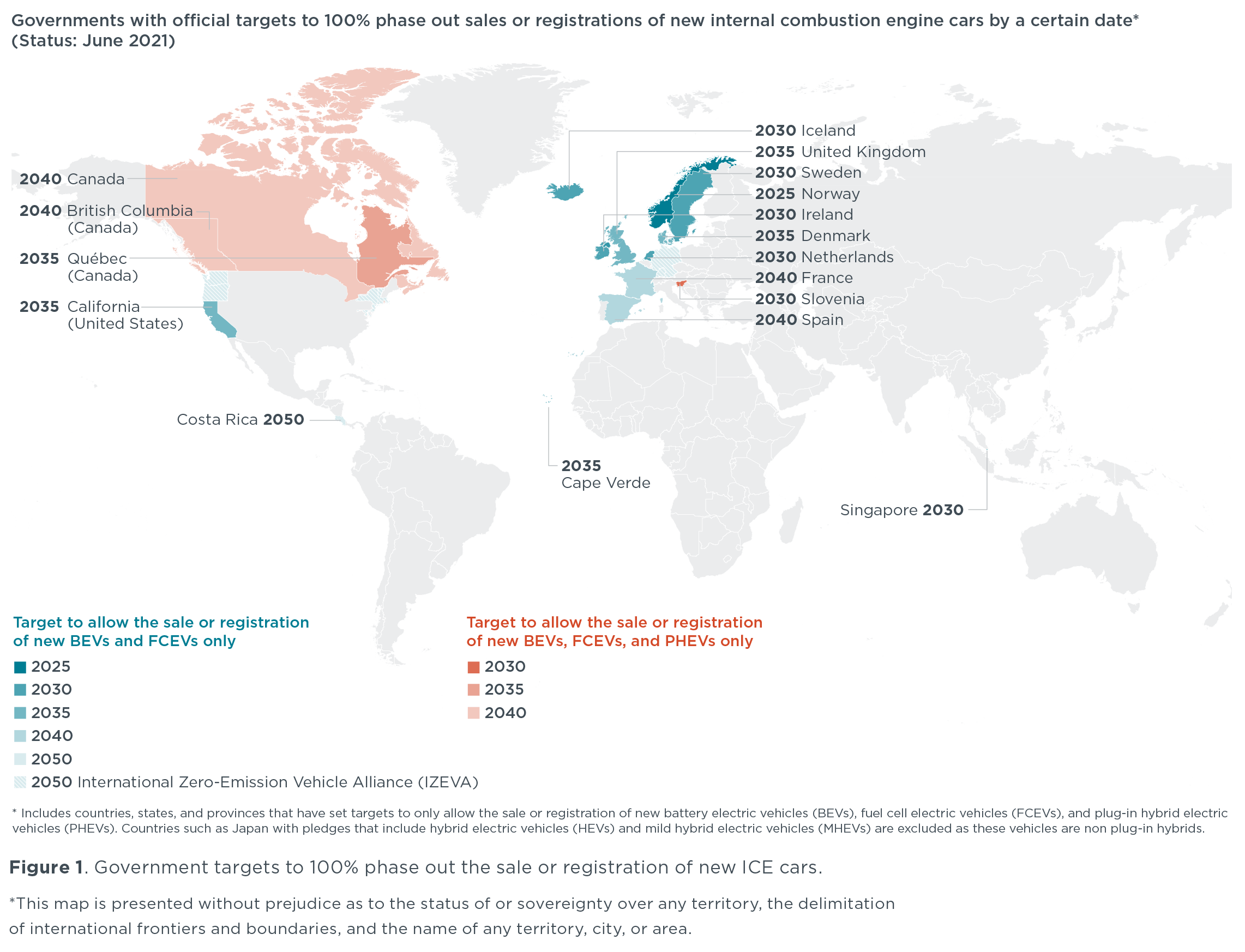Briefing
Update on government targets for phasing out new sales of internal combustion engine passenger cars
This is a global overview of all targets announced, as of June 2021, for phasing out of the sale or registration of new internal combustion engine (ICE) passenger cars. It includes details of each goal in a concluding table. Note that the phase-outs called for in different jurisdictions vary in their timing and in their definition of what qualifies as a zero-emission, or non-ICE, vehicle. An understanding of the different vehicle technologies involved is important when considering the potential climate implications of these initiatives, and this briefing provides an overview of these technologies.
The political map below highlights countries, provinces, and states whose governments have stated an intention to only allow the sale or registration of new battery electric vehicles (BEVs), hydrogen fuel cell electric vehicles (FCEVs), and plug-in hybrid electric vehicles (PHEVs) by some future date. Announcements that signal an intent to phase out the sale or registration of new gasoline and diesel cars but would explicitly permit the sale or registration of other new vehicles using fossil fuels, such as mild hybrid electric vehicles and hybrid electric vehicles, as well as compressed natural gas and liquefied petroleum gas vehicles, are not shown. Additionally, governments that limit the ICE phase-out target to certain user groups, for example private passenger cars, are not highlighted.
By setting these targets, governments have sent a clear signal, even if it is not currently possible for the targets to be implemented in the form of binding regulation, as is the case for countries of the European Union. Additionally, as countries seek to reduce the impacts of emissions from transport on climate change and to comply with the GHG reduction goals under the Paris Agreement, these targets will be increasingly relevant. A transition to zero-emission vehicles is necessary to reach these goals.

